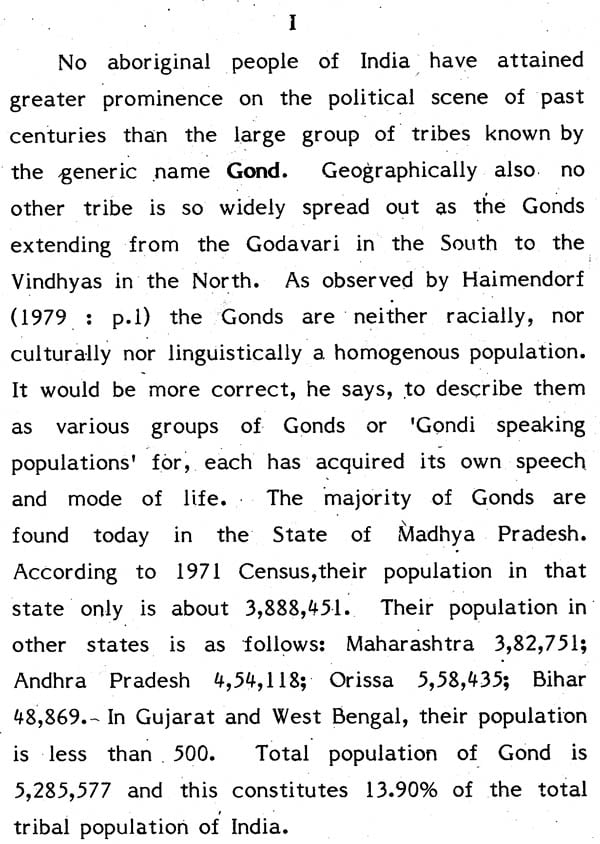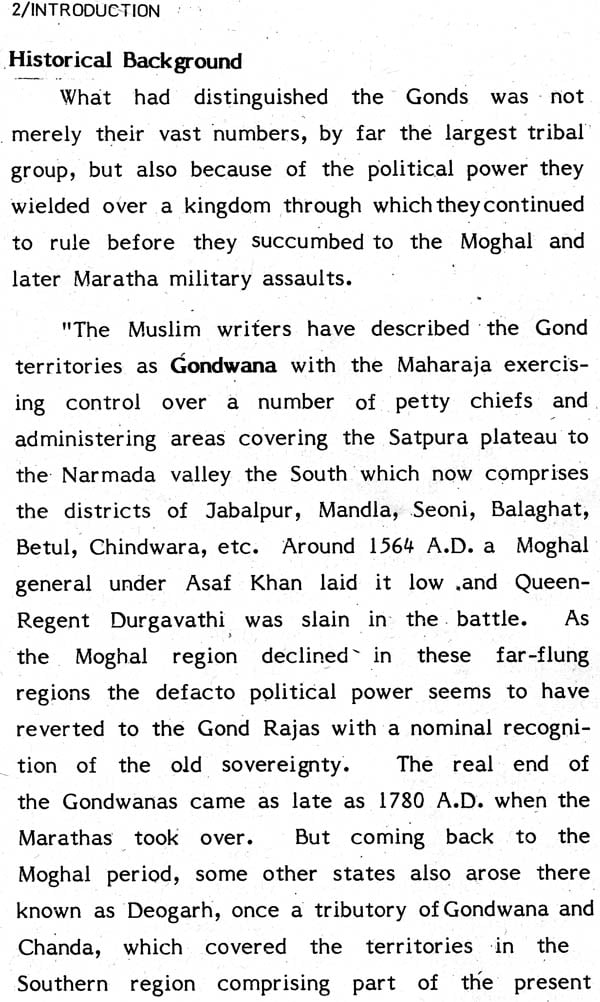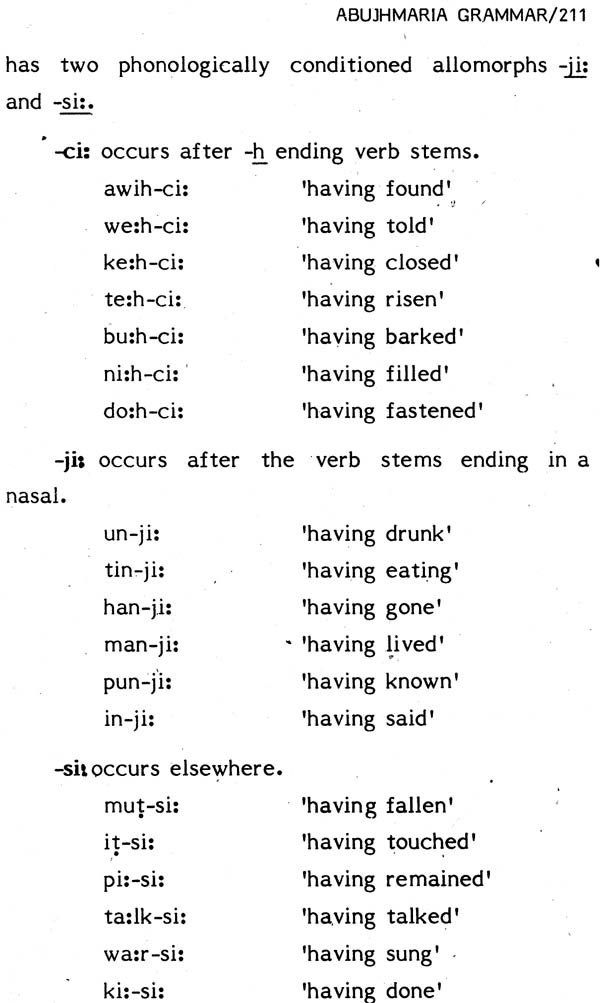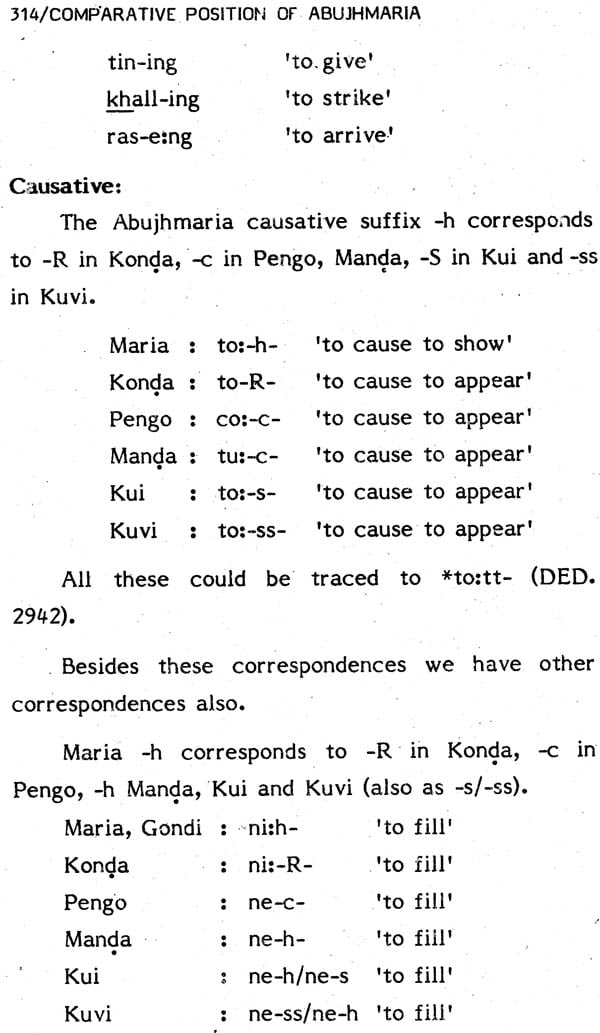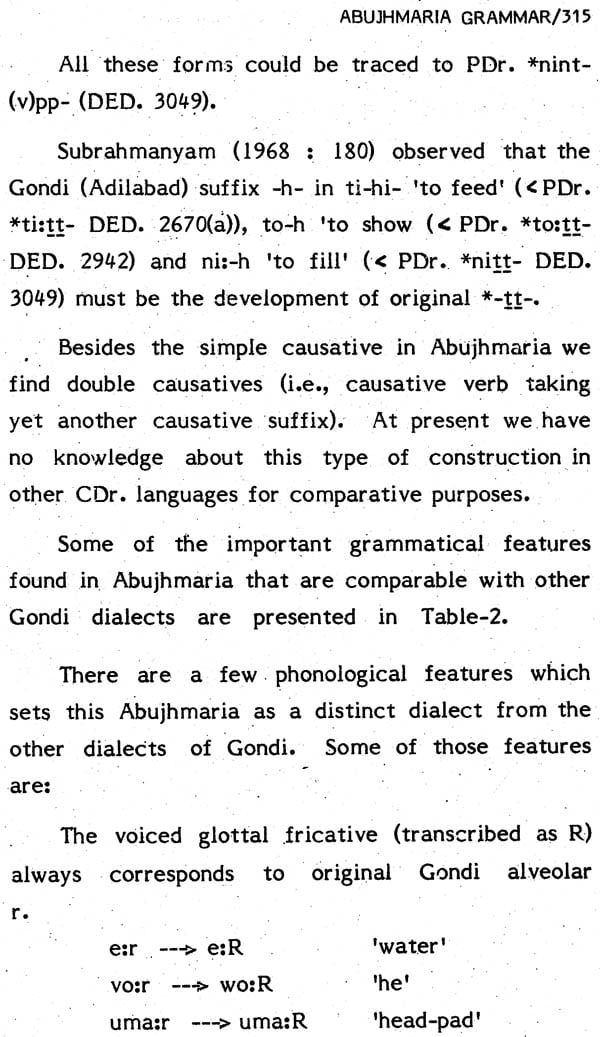
Abujhmaria Grammar (An Old and Rare Book)
Book Specification
| Item Code: | NAV918 |
| Author: | G. V. Natarajan |
| Publisher: | Central Institute Of Indian Languages, Mysore |
| Language: | Abujhmaria and English |
| Edition: | 1985 |
| Pages: | 352 |
| Cover: | PAPERBACK |
| Other Details | 8.50 X 5.50 inch |
| Weight | 310 gm |
Book Description
The Central Institute of Indian Languages set up in 1969 is entrusted with the responsibility of developing Indian Languages through research, training and material production. The Indian languages are at various stages of development from the point of view of the extent of elaboration of their functions and they require different treatments. Development of the tribal languages of the country involves many issues of policy, implementation and academic contribution. Some of them are to be reduced to writing and’ most of them need codification from the point of view of standardisation, preparation of grammar, dictionary and such other linguistic materials and production of written literature.
One of the primary activities of the Institute relating to its work on tribal languages is writing a grammar. The grammar is not only the first step in the direction of codification of the language but also is a basic material for the teaching and learning of the language. It also provides materials for the typological and areal comparisons for languages and for studies of language universals. ‘The theoretical notions about grammar have changed substantially in the recent decades and many of the notions are to be: tested with data from various little known languages. It is hoped that the grammar series of the Institute will fulfil at least partially these demands from linguists and language planners.
The grammars of various tribal languages it is hoped, will lead to 4 handbook of Indian Janquagess which will be of great use to the students of linguistics in India. India has a long grammatical tradition and it is now absorbing the grammatical models developed in the West. It will be 4 worthy goal to achieve to develop a grammatical model for the description of Indian languages derived out of both traditional and modern developments.
The tribal people in India have for long lived in isolation except to be exposed for exploitation. They have not participated to their benefit in the socio-economic development of the country. To come out of their isolation, it is necessary. for them to learn the language of the majority people around them and a number of them have done so. But this bridges the communication gap only in one way and the whole burden of building up this bridge is carried by the minority group. it is necessary, however, for developing mutual understanding and good-will, to increase bidirectional communication between the tribal people and the majority of people of the region. For this purpose, the majority people, especially those who come in contact with the tribal people for various reasons such as civil administration, security, social service, trade, etc., should learn their language. The Grammar is prepared to help them in their learning of the tribal language.
The organisation of the Grammar is based on grammatical functions rather than on grammatical forms. This will help the new learner to find easily how the different functions, which he already knows and wants to express, are formalised in this language. Since this Grammar is primarily meant for pedagogical purposes, theoretical discussions and justifications for a particular analysis are kept to a minimum. The Grammar is divided generally into two broad categories of noun morphology and verb morphology. A description of adjectives precedes verb morphology and that of adverbs follows it. The chapter. on syntax describes the order of the constituents at the surface level. The last chapter describes the position of Abujhmaria in Dravidian.
Though the Grammar is primarily aimed at the language learner and the teacher, it is hoped that it will also be useful to Linguists interested in typology and universals. Data for the Grammar were collected in the field primarily from two informants by elicitation through word and sentence lists. They were then cross-checked with some other informants. The ‘description may not be exhaustive. and there might be gaps. There might be possibilities for alternative analyses. Comments and suggestions passed on to us will be useful to improve our future publications in this series.
**Contents and Sample Pages**

